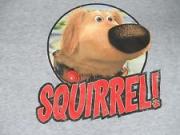After shooting G19s exclusively for a year, I recently started experimenting with G17. With the G17 I am much more likely to push shots low when shooting under a little bit of time pressure (e.g. The Test, 5 Yard Round Up, etc.).
I noticed something similar several years ago when transitioning from very short pistols (G26 and a Shield 1.0) to slightly bigger guns.
My hypothesis is that shorter barreled pistols are more forgiving of mistimed attempts to control recoil. The bullet leaves a shorter barrel slightly sooner than a comparable longer barrel, and there's less time for human error to force the bullet off target. It's a matter of micro-seconds, obviously, and an issue that can be addressed with training, but I think it's a thing.
I am prone to pre-ignition push, but generally minimize it's impact on my shooting with regular dummy and ball drills, skip loading, etc.
A disclaimer - there are minor differences in the triggers between my G19 and G17. The 19 has an Overwatch shoe and a minus connector. The 17 has an Apex kit. They're similar but are not identical. In the interest of experimentation, I will setup the trigger in the G17 the same as the G19 and do more testing. I'll post results here.



 Reply With Quote
Reply With Quote





